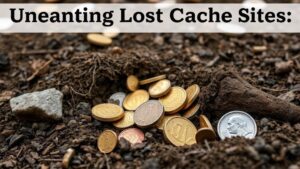Employing Probability Trees to Maximize Treasure Hunting Success
Employing Probability Trees to Maximize Treasure Hunting Success
Treasure hunting, whether for pirate gold or lost artifacts, can be a thrilling yet uncertain endeavor. Employing probability trees can significantly enhance the chances of success by systematically evaluating potential outcomes and making informed decisions. This article delves deep into the concept of probability trees, their application in treasure hunting, and how they can increase the likelihood of uncovering valuable finds.
Understanding Probability Trees
A probability tree is a diagram that illustrates all possible outcomes of a random event, along with their associated probabilities. This tool is particularly useful in decision-making scenarios where outcomes depend on various factors, such as the choice of location for treasure hunting, the equipment used, and the methodologies employed.
- Branches: Each branch represents a possible outcome from a decision or event.
- Probabilities: Assigning probabilities to each branch helps quantify risks and rewards.
By visualizing these outcomes, treasure hunters can more effectively evaluate potential strategies and outcomes. Each subsequent event can further branch out, allowing for an exponential growth of possible scenarios, much like mapping connections in a complex network.
Constructing a Probability Tree for Treasure Hunting
To construct a probability tree, begin with the initial decision or event. For treasure hunting, this could involve selecting a location based on historical data. tree will branch out to represent different potential locations based on their likelihood of holding treasure.
- Step 1: Define the Initial Event: Start with the primary choice–selecting a treasure hunting site with historical significance.
- Step 2: Identify Outcomes: For each site, determine the key events that may follow, such as false positives in metal detection or successful digs.
- Step 3: Assign Probabilities: Use historical success rates, expert opinions, or statistical data to assign probabilities to each branch.
For example, if researching a site where a shipwreck occurred, one might define outcomes as:
- Finding treasure (70% probability)
- Finding nothing of value (30% probability)
This is further detailed with branches representing various aspects such as equipment efficacy or detecting anomalies.
Case Study: The Treasure Hunters of Oak Island
The case of Oak Island, Nova Scotia, illustrates the powerful application of probability trees in treasure hunting. Over decades, various expeditions have utilized a variety of tools and methods that can be diagrammed using a probability tree.
- Initial Decision: Choose digging locations based on prior findings (e.g., Money Pit or Smiths Cove).
- Outcomes: Successful excavation leads to artifacts or treasure, while unsuccessful digs lead to soil conditions, potential further investigations, or turning up no findings.
- Probabilities: Historical excavations could estimate a 10% success rate at finding treasure in unproven locations.
This structured approach allows treasure hunters to prioritize their efforts on sites with the highest potential returns, while managing the expectations of investments in time and resources.
Real-World Applications Beyond Treasure Hunting
Probability trees find utility beyond the realm of treasure hunting. Industries such as finance, insurance, and medicine employ similar decision-making frameworks to evaluate risks and potential payoffs. For example:
- Finance: Investors use probability trees to analyze stock options, considering different market conditions and their potential returns.
- Insurance: Actuaries calculate the probability of claims against various policies to price risk accurately.
- Medicine: Doctors utilize decision trees to assess treatment options against potential outcomes for patient health.
These applications underscore the versatility of probability trees as a decision-making tool across various fields.
Useing Probability Trees: Actionable Takeaways
To wrap up, employing probability trees in treasure hunting can systematically enhance the search strategy and optimize success rates. Here are key takeaways for implementing this approach:
- Begin by clearly defining the decision-making problem and the potential actions involved.
- Collect relevant geological and historical data to accurately inform outcome probabilities.
- Regularly revisit and update the probability tree as new information is gathered–this iterative process sharpens the focus on high-yield strategies.
By providing a structured way to analyze uncertainties, probability trees become indispensable for treasure hunters seeking to maximize their success in unearthing hidden fortunes.


